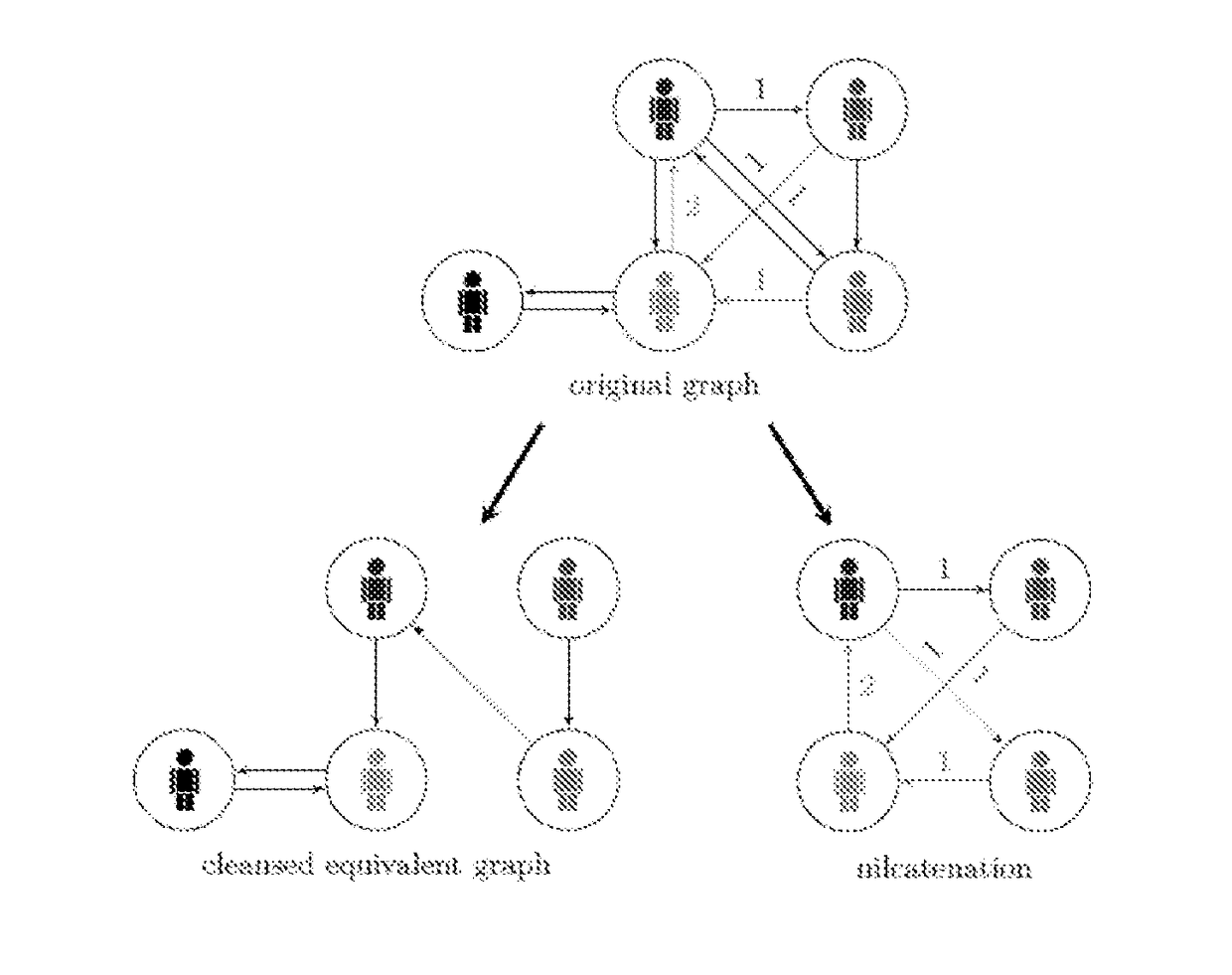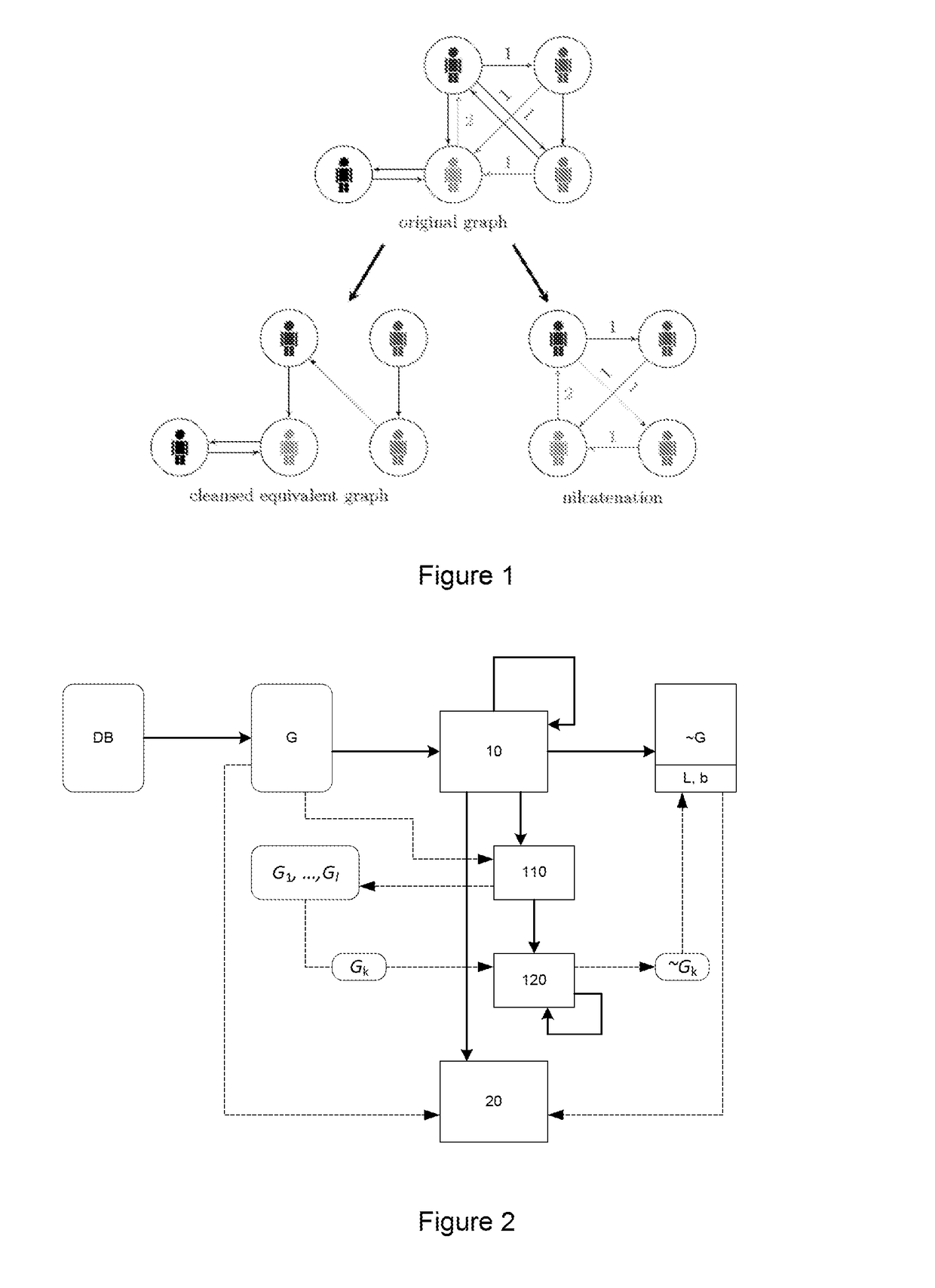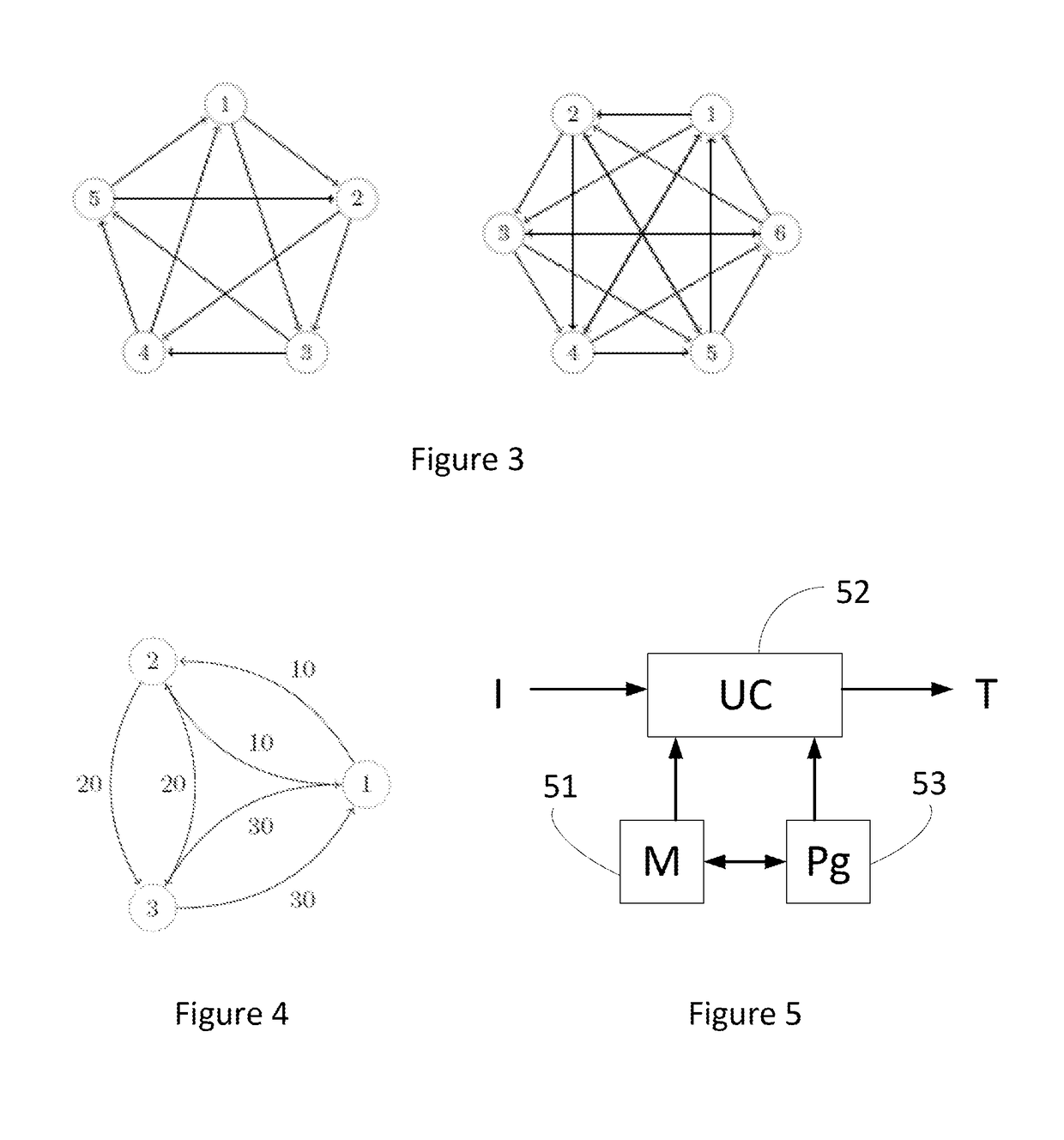Device, method and program for securely reducing an amount of records in a database
a database and record-based technology, applied in the field of devices, methods and programs, can solve the problems of increasing storage requirements, increasing the burden on all operations, and still exerting considerable stress on the network of bitcoin blockchain, so as to and reduce the size of the database
- Summary
- Abstract
- Description
- Claims
- Application Information
AI Technical Summary
Benefits of technology
Problems solved by technology
Method used
Image
Examples
first embodiment
5.2.4.3. Description of a Solving a Generic NCP Instance
[0091]Following the previous observation, one may be tempted to leverage known SSP solving techniques to tackle the NCP. However, the reduction from NCP to SSP is not necessarily interesting from a computational standpoint for large databases: coefficients become very large, of the order of Bbn, where B is the upper bound of the representation of E, and b is the chosen basis. This encoding can be somewhat improved if the bounds Bi± for each column are known, because better representations can be used.
[0092]However, in practice it may become quickly prohibitive; and even brute-forcing the original NCP may be less computationally demanding—the subset-sum problem can be solved exactly (classically) in worst-case time (2m) by brute-forcing all combinations, and even state-of-the-art algorithms only have marginally better complexity, namely (2m·0.291 . . . ).
[0093]If one wishes to tackle the NCP directly, for n>2, the meet-in-the-m...
second embodiment
5.3. Description of a Faster NCP Solving
[0097]While the lattice reduction approach discussed above cannot necessarily be efficiently applied directly on a large multigraph to find a solution to the NCP, it can work on small multigraphs. According to the present technique, it is described, in this section, a pruning mechanism that reduces the problem size dramatically. This algorithm breaks down the NCP instance into many smaller NCP sub-instances, which can be tackled by LLL. Furthermore, each instance can be dealt with independently, which makes our heuristic parallelizable.
[0098]In other terms, while one could turn an NCP instance into an SSP instance and try to tackle the SSP instance with existing techniques, one first leverages the particular form of such problems—namely the graph-related properties—to reduce problem size. Reducing the problem size is possible thanks to the following two observations:
[0099]Firstly, it is only needed to consider strongly connected components. I...
PUM
 Login to View More
Login to View More Abstract
Description
Claims
Application Information
 Login to View More
Login to View More - R&D
- Intellectual Property
- Life Sciences
- Materials
- Tech Scout
- Unparalleled Data Quality
- Higher Quality Content
- 60% Fewer Hallucinations
Browse by: Latest US Patents, China's latest patents, Technical Efficacy Thesaurus, Application Domain, Technology Topic, Popular Technical Reports.
© 2025 PatSnap. All rights reserved.Legal|Privacy policy|Modern Slavery Act Transparency Statement|Sitemap|About US| Contact US: help@patsnap.com



